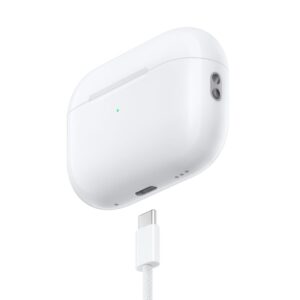Did you recently notice the battery light illuminating on your car’s dashboard? Don’t worry, we’ve got you covered! Understanding the battery light in your car is crucial for ensuring a smooth and uninterrupted driving experience. In this article, we will delve into the details of what the battery light indicates and provide you with a solution to keep your vehicle running seamlessly. So, if you’ve ever wondered about the significance of the battery light in your car, you’ve come to the right place. Let’s dive in and shed some light on this topic!
Understanding The Battery Light In Your Car
Introduction
Have you ever been driving down the road and noticed a small light on your car’s dashboard that looks like a battery? This little light, often referred to as the battery light, is a crucial indicator that should not be ignored. Understanding what the battery light signifies can help you address potential issues before they become major problems. In this article, we will delve into the various aspects of the battery light in your car, its functions, and what to do if it illuminates unexpectedly.
What Does the Battery Light Indicate?
When your car’s battery light comes on, it is an indication that there may be a problem with your vehicle’s electrical system. The battery light is usually connected to the charging system of your car, which includes the alternator, voltage regulator, and battery itself. Here are some possible reasons why the battery light might illuminate:
1. Low Battery Voltage
One common reason for the battery light to turn on is when your car’s battery voltage drops below a certain threshold. This can happen if your battery is not holding a charge properly, or if there is an issue with the alternator not providing enough power to recharge the battery.
2. Failing Alternator
The alternator is responsible for generating electricity to power the electrical components of your car and recharge the battery while the engine is running. If the alternator is failing, it may not be able to provide enough power, leading to a low battery voltage and the illumination of the battery light.
3. Faulty Voltage Regulator
The voltage regulator controls the amount of voltage being sent to the battery to ensure it doesn’t overcharge or undercharge. If the voltage regulator malfunctions, it can cause the battery light to come on.
4. Loose or Damaged Drive Belt
A loose or damaged drive belt can affect the performance of the alternator, causing the battery light to turn on. The drive belt is responsible for transferring power from the engine to the various components, including the alternator.
5. Corroded Battery Terminals
Corrosion on the battery terminals can hinder the flow of electrical current, leading to a drop in voltage. This can trigger the battery light to illuminate.
What to Do When the Battery Light Comes On?
If you notice that the battery light comes on while you’re driving, it is important not to ignore it. Ignoring the battery light can result in your car’s electrical system failing, leaving you stranded or with a vehicle that won’t start. Here are the steps you should take:
1. Don’t Panic
Seeing the battery light may cause panic, especially if you’re in the middle of traffic. Stay calm and try to find a safe place to pull over.
2. Assess the Situation
Once you’ve stopped, turn off any unnecessary electrical components in your car, such as the radio or air conditioning, to reduce the load on the battery. Take a moment to observe if there are any other signs of electrical issues, such as dimming headlights or unusual smells.
3. Check Battery Connections
Open the hood and inspect the battery terminals for any signs of corrosion or loose connections. If you notice any corrosion, clean the terminals using a wire brush and ensure they are tightly secured.
4. Consider Professional Help
If the battery connections appear to be fine, it is advisable to seek professional assistance. A certified mechanic can perform a comprehensive diagnosis of your vehicle’s electrical system to identify the root cause of the battery light and recommend the necessary repairs.
Preventing Battery Light Issues
While unexpected issues with the battery light can occur, there are several preventative measures you can take to minimize the chances of encountering such problems. Here are a few tips:
1. Regular Battery Maintenance
Keep your battery in good condition by regularly inspecting the terminals for corrosion and cleaning them if necessary. Additionally, ensure that the battery is securely fastened in its compartment to avoid any vibrations that may damage the connections.
2. Alternator Inspection
Have your alternator inspected regularly to ensure it is functioning properly. A healthy alternator is crucial for charging the battery and powering your car’s electrical system.
3. Drive Regularly
Frequent driving helps keep the battery charged. If you have a vehicle that you don’t use often, consider investing in a trickle charger to maintain the battery’s charge.
4. Avoid Excessive Electrical Load
Minimize the strain on your vehicle’s electrical system by avoiding the prolonged use of power-consuming devices when the engine is not running. This includes leaving the radio or headlights on when the car is turned off.
Understanding the battery light in your car is essential for maintaining a reliable and functional vehicle. It serves as an indicator of potential problems in your car’s electrical system, with possible causes ranging from low battery voltage to a failing alternator or faulty voltage regulator. By promptly addressing any issues indicated by the battery light and following preventative measures, you can avoid costly repairs and unexpected breakdowns. Remember, if the battery light comes on while driving, it is best to pull over safely, assess the situation, and seek professional assistance if necessary.
Frequently Asked Questions
What does it mean when the battery light in my car comes on?
The battery light coming on in your car usually indicates a problem with the charging system. It means that the battery is not receiving enough voltage from the alternator to keep it charged.
What are the common causes of the battery light coming on?
There are several possible causes for the battery light coming on, including a faulty alternator, a loose or damaged drive belt, a bad battery, or a problem with the wiring.
What should I do if the battery light comes on while I’m driving?
If the battery light comes on while you’re driving, it’s important to address the issue as soon as possible. Reduce your electrical load by turning off non-essential accessories, and head to a safe location or a nearby service station for further inspection and possible repairs.
Can I continue driving with the battery light on?
Continuing to drive with the battery light on is not recommended. The battery will eventually lose its charge, causing your car to stall. It’s best to have the issue resolved as soon as possible to avoid getting stranded.
Is it safe to jump-start my car if the battery light is on?
Jump-starting your car may provide a temporary solution if the battery light is on. However, keep in mind that it’s essential to address the underlying issue causing the light to come on. Therefore, it is advisable to have your vehicle inspected by a professional after jump-starting it.
Can a dead battery trigger the battery light?
A dead battery itself may not trigger the battery light to come on, but it can be a symptom of a larger problem within the charging system. If your battery is frequently dying, it’s recommended to have your car’s charging system inspected to determine the root cause.
Final Thoughts
Understanding The Battery Light In Your Car is crucial for every driver. If you see the battery light illuminate on your dashboard, it indicates a potential issue with your car’s charging system. Ignoring this warning can lead to battery failure and leave you stranded. It’s important to take immediate action by checking the battery connections, alternator, and drive belt. If the issue persists, it’s recommended to seek professional help to diagnose and fix the problem. By promptly addressing the battery light, you can prevent further damage and ensure your car’s reliable performance on the road. Stay informed and proactive when it comes to your vehicle’s battery health.



